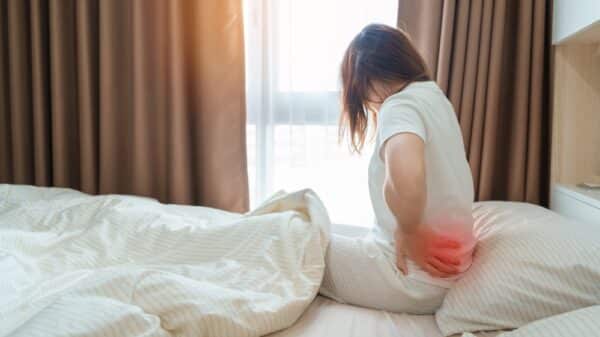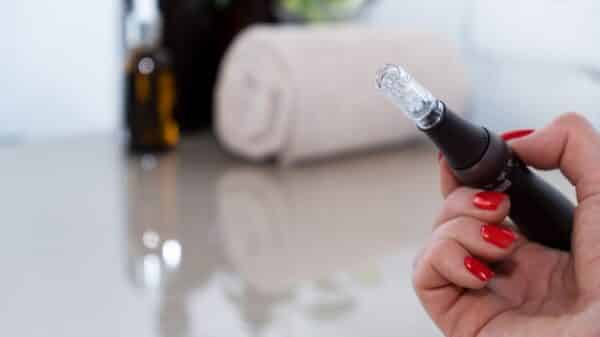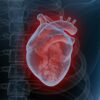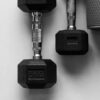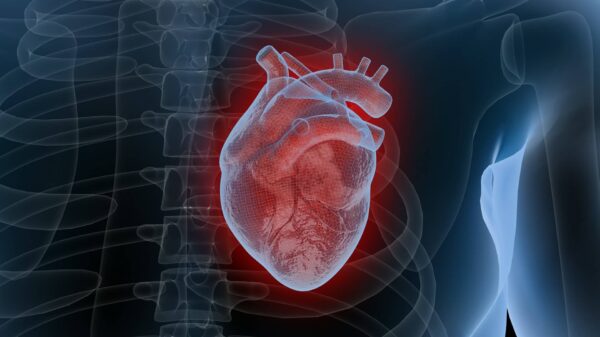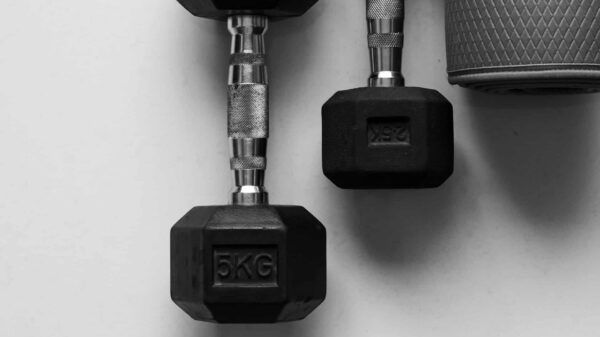Hormonal migraines are more than just a bothersome inconvenience; they can greatly affect the lives of millions of women globally. These migraines are often associated with fluctuations in hormones like estrogen, leading to intensified episodes during specific periods such as the menstrual cycle, pregnancy, or menopause. Grasping the triggers of these hormonal headaches is key to effective management and enhancing overall well-being.
When facing hormonal migraines, it’s crucial to acknowledge the genuine link between hormonal fluctuations and migraine occurrences. You may find yourself managing your lifestyle around your cycle, anxiously anticipating those days marked by migraine attacks. However, there is hope. By educating yourself on your symptoms and reviewing available treatment options, you can regain a sense of control over your health and overall quality of life.
The Science Behind Migraine Devices
In recent years, there has been a transformation in migraine management, largely due to the introduction of specialized devices that offer relief without relying on medication. These devices function by stimulating nerves or brain regions involved in pain processing. In contrast to traditional medications, which might impose side effects or stress your body, these devices provide a drug-free alternative, making them particularly appealing for women who might be pregnant, breastfeeding, or undergoing hormone therapy.
Consider having a compact, portable device that easily integrates into your daily life. Some of these devices aim to prevent migraines before they begin, while others assist at the first signs of an attack. Popular technologies in this field include transcranial magnetic stimulation (TMS), transcutaneous electrical nerve stimulation (TENS), and vagus nerve stimulation (VNS), each targeting distinct pathways within the nervous system.
How to Select the Right Migraine Device
Choosing an appropriate migraine relief device can seem daunting, especially when you’re already facing the challenging effects of chronic pain. Begin by reflecting on a few essential questions to help narrow down your choices:
- What kind of migraine do you typically experience? Some devices are tailored to specific migraine types—such as hormonal or chronic. Ensure that any device you consider is FDA-cleared for your migraine type.
- Are you in search of preventive measures or immediate relief? Certain devices focus solely on prevention, while others are structured to provide relief once a migraine commences. Determine whether you need daily management or a device you can rely on in critical moments.
- Is the device appropriate for your age group? Safety is paramount, particularly if considering options for teenagers or expectant mothers. Always check age clearance and safety information before deciding.
- How user-friendly is the device, and is it portable? Look for solutions that blend seamlessly into your life—consider wearables, app-connected devices, or discreet gadgets that are travel-friendly.
- Does clinical evidence support the device, and what do users have to say? Prioritize devices that are clinically proven, FDA-cleared, and positively reviewed by real users. This ensures your investment is both safe and effective.
Top 8 Treatments for Hormonal Migraine: Notable Devices
Below are some premier solutions backed by clinical evidence and frequently recommended by headache specialists:
1. CEFALY
Since its launch in 2008, CEFALY has pioneered migraine treatment technologies. Their CEFALY Enhanced device has been endorsed by healthcare experts as an effective option for migraine relief. It specifically targets the trigeminal nerve, often implicated in migraine discomfort, and many users report noticeable relief within just an hour of use. With its long-standing market presence and robust clinical support, CEFALY Enhanced continues to be a trusted, drug-free solution.
Key Features:
– FDA-cleared
– Free shipping on all orders and a 90-day money-back guarantee
– No prescription necessary
– Clinically validated
– 3-year warranty
2. ElectroCore
Founded in 2005, ElectroCore focuses on bioelectronic medicine. Their flagship product, the gammaCore™ device, employs noninvasive vagus nerve stimulation for drug-free headache relief. This versatile device can be used both for prevention and acute treatment, adapting to individual requirements.
Key Features:
– Clinically validated and FDA-cleared for adults and children 12 and older
– Effective for both preventive and acute relief
– Almost half of users report significant relief within two hours of initial use
– Portable for convenient accessibility
– Generally favorable user feedback
3. TensCare
TensCare is dedicated to improving lives through innovative, drug-free pain relief solutions. Their Mynd Migraine Relief device is a TENS unit that delivers small electrical currents to alleviate headaches and may help prevent future occurrences. Its compact design allows for easy use in any setting.
Key Features:
– Slim and easily portable
– Rechargeable with a long-lasting battery
– 40 adjustable intensity levels for customized relief
– Recommended by the NHS
– Economical and environmentally friendly
4. Salvia BioElectronics
Established in 2017, Salvia BioElectronics is transforming migraine treatment through neuromodulation therapy. Their innovative device utilizes gentle electrical pulses to target migraine-related nerves, providing a promising treatment option that has also shown efficacy in other neurological disorders.
Key Features:
– Employs neuromodulation therapy for effective relief
– Led by experienced industry professionals
– Global reach with ongoing research for validation
– Committed to gender diversity, with 45% of the team comprising women
5. Migracorr
While details about Migracorr’s specific product are extensive, the device employs patented pneumatic technology for a drug-free relief approach. This method resonates with those seeking more natural ways to manage migraines.
By exploring these alternatives, you are paving the way for a more manageable migraine experience. You deserve to feel your best, and with the right tools, that is entirely achievable. Whether confronting hormonal shifts or simply navigating life’s challenges, knowing that reliable options exist can offer valuable reassurance and hope. Imagine living free from the constant dread of a looming migraine; it’s exhausting, yet there are pioneering medical devices available that present real relief. These innovative devices not only aim to alleviate symptoms rapidly but also work to prevent future attacks through noninvasive methods. If you’ve ever wished for a natural way to mitigate these debilitating headaches, discovering these options is a must.
One particularly notable product on today’s market employs a unique Dual Neuromodulation technique. This innovative approach uses precise air pressure to simultaneously stimulate the trigeminal and vagus nerves, leading to significant relief in under 15 minutes. Envision no longer waiting for medications to take effect or worrying about adverse side effects. With consistent use, many users report a marked decrease in the frequency of their migraine episodes. It’s 100% natural, noninvasive, and requires no prescriptions or refills. Consider the empowering ability to manage your health without the anxiety of potential drug interactions—this device could truly be transformative for many.
Key Features:– Dual neuromodulation technology engages two cranial nerves for effective relief.
– Experience migraine alleviation in as little as 15 minutes.
– Consistent usage may reduce the frequency of attacks.
– Completely natural and free from pharmaceuticals.
– No prescriptions or refills necessary.
Another noteworthy solution is offered by LloydsPharmacy, a reputable healthcare provider known for services beyond mere prescription filling. They present the Migraine TENS pain reliever, a device that employs transcutaneous electrical nerve stimulation (TENS) to send mild electrical impulses through the skin, efficiently blocking pain signals to the brain. This device is intended for forehead placement with self-adhesive pads, granting fast relief while working to reduce the frequency of future episodes.
**Key Features:**
– A natural, drug-free option for migraine relief.
– Delivers focused pain relief through direct nerve stimulation.
– Equipped with a USB charging station, eliminating the need for batteries.
– Compact design ensures easy transport and usability.
– Simple to apply with replaceable adhesive pads.
Next is Neurolief, a pioneering firm committed to mental health advancements, especially for individuals suffering from neurological and mood disorders. Their Revilion MG device marks a substantial advancement in noninvasive neuromodulation therapy. This wearable headset stimulates six branches of the trigeminal and occipital nerves, achieving intricate nerve engagement typically reserved for more invasive procedures. It also connects to a comprehensive digital platform, featuring a patient app for treatment tracking and a physician dashboard for remote monitoring.
**Key Features:**
– Targeted stimulation provides effective relief.
– Dedicated support coaches are readily available.
– User-friendly tech design enhances usability.
– Monitor your therapy progress digitally with detailed reports.
– Continuous on-demand support when needed.
Moving on to eNeura, an innovative company committed to delivering cutting-edge neurological treatments. Their sTMS Smart Diary presents a noninvasive therapy that is FDA-cleared for treating acute migraine attacks and preventing future occurrences. Using low-frequency electromagnetic pulses, this device calms overactive brain nerves, allowing you to manage migraines conveniently at home—no hospital visits or complex procedures required.
**Key Features:**
– Customized patient support tailored to individual needs.
– Quick action to effectively halt migraine attacks.
– A noninvasive, medication-free therapy that is easy to tolerate.
– The smart diary automatically logs your migraine treatment history for tracking.
– Tailored treatment options that adjust to your specific requirements.
Soterix Medical is another prominent name leading noninvasive treatment options. Backed by extensive clinical trials, their PainX® tDCS System presents a compelling alternative to surgical interventions. Designed for individuals who have not found relief through conventional medications, this device has demonstrated notable effectiveness without requiring invasive strategies.
**Key Features:**
– A frontrunner in noninvasive neuromodulation technology.
– Patented technologies enhance treatment options.
– Treatment sessions require less than 30 minutes.
– Custom solutions available for various conditions, including migraines.
– Designed with user comfort and simplicity in mind.
Lastly, EmeTerm utilizes TEAS and tDCS methods to provide effective, safe relief from migraines. Their HeadaTerm 2, which is FDA-approved, targets nerves on the forehead to alleviate primary headaches, delivering rapid, noninvasive relief without side effects.
**Key Features:**
– FDA-cleared for safety and efficacy.
– Manual intensity control allows for customized treatment.
– Rechargeable device for ongoing use.
– Fast-acting relief through eTNS technology.
– No prescriptions necessary, enhancing accessibility.
When evaluating your options, it’s crucial to recognize the distinctions among these migraine relief devices. Each offers unique features, technologies, and applications. By exploring what’s available—whether it’s dual stimulation techniques, TENS therapy, or the latest advancements in neuromodulation—you can select the one that aligns best with your needs and lifestyle.
You don’t have to face migraines alone; innovative solutions are ready to help you reclaim your days from debilitating pain. TensCare Mynd emerges as a noteworthy option for those struggling with migraines. This device uses Transcutaneous Electrical Nerve Stimulation (TENS) aimed at the trigeminal branches, providing relief during acute episodes as well as preventive support. Easily placed on the forehead, it is portable enough for use at home or while traveling, and its endorsement from the UK’s NHS adds a level of credibility, showcasing its acceptance in clinical practice.
On a different technological front, the Salvia BioElectronics device is currently in development, focusing on implantable neuromodulation strategies. This advanced method targets various cranial nerves to prevent migraines and shows potential for long-term management once it undergoes sufficient evaluations.
For those in search of immediate relief with preventive benefits, the Migracorr Migraine Stopper leverages a unique pneumatic dual neuromodulation technique to affect the trigeminal and vagus nerves. While still undergoing review and not widely accessible, its on-demand relief design presents a promising prospect for migraine sufferers.
Additionally, the LloydsPharmacy Device provides a straightforward TENS solution aimed at forehead nerves. Although it lacks FDA approval and is limited to the UK market, it emphasizes ease of access for home and travel-friendly relief.
Neurolief’s Revilion MG innovation introduces multi-site neuromodulation that addresses six different nerves simultaneously. As a wearable device featuring remote monitoring capabilities, it focuses on preventive care, making it a high-tech option for better migraine management.
The eNeura sTMS, employing single-pulse Transcranial Magnetic Stimulation, targets cortical neurons for both acute and preventive relief, making it suitable for home use and including smart tracking capabilities for a modern approach to migraine management.
Finally, Soterix PainX® tDCS offers a transcranial direct current stimulation method predominantly used within clinical research settings, catering specifically to individuals with refractory migraines and emphasizing care in controlled environments.
### Who Should Not Use Migraine Devices
When contemplating these innovative devices, it’s vital to understand their limitations. Individuals with active medical implants, such as pacemakers or cochlear implants, should refrain from using noninvasive vagus nerve stimulators due to potential risks. Those with histories of carotid atherosclerosis or cervical vagotomy should also exercise caution. It’s crucial to be aware of issues like vasovagal syncope and any skin irritation near application sites.
If you’re pregnant or nursing, it’s important to consult with a healthcare provider before using any device. Not all devices are approved for children or adolescents, so always verify age restrictions for safety.
### What Treatments Help With Hormonal Migraine?
Selecting a migraine device goes beyond the technology; it’s about finding the right fit for your lifestyle. With some devices prioritizing prevention and others focusing on immediate relief, you can strategically partner your migraine management. Consider your frequency of migraines, potential triggers, and responses to treatments when making your decision. Drug-free options offer specialized support without the worry of daily side effects, proving invaluable in long-term migraine management strategies.
### What Are Hormonal Migraines?
Hormonal migraines represent a complex neurological disorder that affects approximately 12% of adults worldwide. Characterized by severe headaches, they often coincide with nausea, vomiting, and heightened sensitivities to light, sound, and even touch.
Women experience these challenges more frequently than men, primarily due to hormonal changes linked to phases such as menstruation, pregnancy, and menopause. Understanding these distinctive experiences is key for effectively diagnosing and treating migraines in women. Hormone-based treatments can be particularly beneficial during these significant life phases, aiding in better management of migraine symptoms.
Navigating through the realm of migraines may feel daunting, but staying informed about available treatments and comprehending the nature of the condition is an excellent initial step toward achieving relief. Your journey is unique, and the right tools are accessible to support you along the way.



















